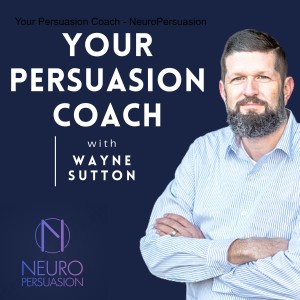
Tuesday Sep 21, 2021
The $3.5 Million Secret of Persuading Your Audience!
The $3.5 Million Secret of Persuading Your Audience!
As you find yourself ready... here are 2 ways I can help you influence yourself, influence others, and help you impact the world:
⠀⠀⠀⠀⠀⠀
1. Discover our case study program where we teach you how to sell persuade others and get wealthy doing it — Click Here https://yourpersuasioncoach.com/work-with-me/⠀⠀⠀⠀⠀⠀⠀⠀⠀⠀⠀⠀⠀
2. Join the NeuroPersuasion™ Facebook Group and connect with others! You will discover what it means to be a life-changer! — Click Here - https://www.facebook.com/groups/neuropersuasionsecrets
-
On April 8, 2007 the Washington Post ran a long feature article by Gene Weingarten in the Sunday magazine called "Pearls Before Breakfast” that won a Pulitzer Prize for journalism. Rarely have I been more intrigued with a story, and I think musicians will be and should be talking about it for decades to come. A summary of it should maybe be included in every music curriculum, and every music student of every style of music should possibly know the story as well as school children learn about Paul Revere’s Ride or the tale of Pocahantas. Weingarten’s article is very long, very detailed and thoughtful, but it doesn’t zoom out quite far enough to suit me, and neither do any of the discussions of it that I can find. Let’s take a closer look, to perhaps help both performers and listeners better navigate the complex world of musical performance.
The author was a writer for the Post, who convinced classical violinist Joshua Bell, considered one of the greatest virtuosos of this era and voted the best classical musician in America, to put on a T-shirt and a baseball cap and try being a street musician to find out what would happen. During a January morning rush hour, Bell opened the case to his $3.5 million Stradivarius and played in the subway station at L'Enfant Plaza in Washington, D.C. Bell was in town playing a concert at the Library of Congress, and agreed to participate in this unprecedented social and musical experiment. It was anybody's guess as to what would happen. Would passers-by recognize genius and talent or just walk by? Would a crowd obstruct the commuter traffic? How much money would he make? Could hallowed music and "high art" make a mark or maybe shine some bright sunshine into the everyday world of commuters in a hurry?
What Happened?
A hidden camera (above) documented what happened during a 43-minute period, while Bell played pieces by Bach, Schubert (Ave Maria), Massenet and Manuel Ponce. He opened at 7:51 AM on Friday, January 12, with Bach's 14-minute Chaconne (Violin Partita No. 2 in D Minor), generally considered to be the single greatest solo violin work and one of the greatest musical compositions ever created. It was played on one of the finest instruments the world has ever known, the so-called “Gibson ex Huberman” Stradivarius, made in 1713 at the peak of the legendary luthier's powers. The subway location was chosen because it was a place where the acoustics were not bad, and the music would carry reasonably well. Bell even took a taxi 3 blocks to the subway to keep his instrument from even getting slightly cold.
No comments yet. Be the first to say something!